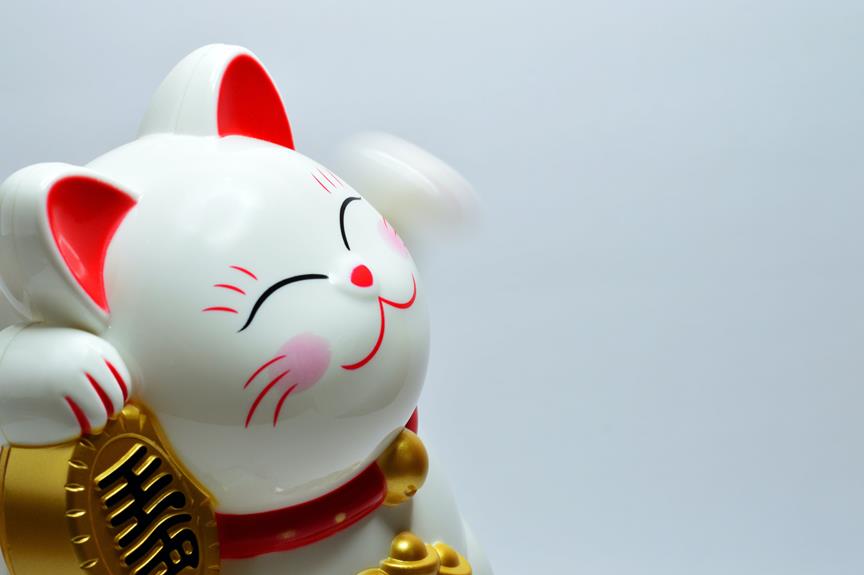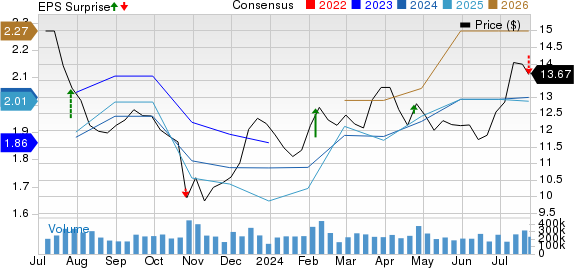Silver certificates have a rich history, dating back to the late 1800s when they were introduced by the U.S. government. These certificates allowed holders to exchange them for a specific amount of silver. While they have been discontinued since the late 1960s, silver certificates still hold value and rarity. Certain versions of these certificates are highly sought after by collectors and can command significant prices.
In this article, we will explore the different denominations and designs of silver certificates, discuss their value and rarity, and provide insights into investing in silver. Join us as we delve into the world of rare and valuable silver certificates and uncover the untapped fortune they hold.
Key Takeaways
- Silver certificates were issued by the U.S. government in the late 1800s and could be redeemed for a certain amount of silver.
- The obsolescence of silver certificates occurred in the 1960s due to the repeal of the Silver Purchase Act and a prospective shortage of silver bullion.
- Silver certificates were issued in different denominations and designs, ranging from $1 to $1,000 and featuring notable figures such as George Washington, Abraham Lincoln, and Alexander Hamilton.
- Some rare versions of silver certificates, such as the 1928C, 1928D, and 1928E, can be worth up to $5,000, while the value of a $1 silver certificate depends on the type and condition.
History of Silver Certificates
The history of silver certificates can be traced back to the late 1800s when they were issued by the U.S. government as a means for holders to redeem a specific amount of silver. These certificates were introduced in 1878 under the Bland-Allison Act, following the Coinage Act of 1873 which placed the U.S. on the gold standard and ended free coinage for silver.
The issuance of silver certificates allowed the U.S. to continue utilizing silver as a form of currency, despite being on the gold standard. Over time, silver certificates became popular amongst collectors, who valued them more than their face value due to their historical significance and rarity.
The impact of the gold standard on the issuance and circulation of silver certificates highlights the complex relationship between different monetary standards in the U.S. economy.
Obsolescence of Silver Certificates
Following the introduction of silver certificates in 1878, the obsolescence of these monetary instruments gradually took place over the years due to various factors. The obsolescence of silver certificates had both an effect on the economy and an impact on collectors.
From an economic perspective, the obsolescence of silver certificates can be attributed to the prospective shortage of silver bullion. With the repeal of the Silver Purchase Act in 1963, the retirement of $1 silver certificates ensued. The issuance of coins stopped in 1964, and certificates were only redeemable for silver granules. This signaled the end of the redemption period in June 1968, ultimately rendering the certificates obsolete.
For collectors, the obsolescence of silver certificates has created a sense of rarity and value. The fact that silver certificates are no longer printed by the U.S. government has increased their appeal among collectors. Certain versions, such as the 1928C, 1928D, and 1928E, are considered rare and can fetch up to $5,000 if in fine condition. This has created an untapped fortune for collectors who possess these valuable silver certificates.
To provide a visual representation of the impact of obsolescence, here is a table showcasing the progression of silver certificate issuance and redemption:
| Year | Issuance of Silver Certificates | Redemption of Silver Certificates |
|---|---|---|
| 1878 | Commencement | N/A |
| 1963 | Retirement of $1 certificates | Exchange for silver dollar coins |
| 1964 | Cessation of coin issuance | Redeemable for silver granules |
| 1968 | N/A | End of redemption period |
This table highlights the timeline of the obsolescence process, starting from the issuance of silver certificates in 1878 to the eventual end of redemption in 1968. It demonstrates the gradual shift away from silver certificates as a viable monetary instrument.
Denominations and Designs
Silver certificates were issued in various denominations and featured unique designs throughout their history. The denominations of silver certificates varied from $1 to $1,000, with larger-sized certificates being issued from 1878 to 1923 and smaller-sized certificates being issued from 1928 until their cessation in 1964.
The designs of the large-sized certificates often depicted notable figures, while the small-sized certificates commonly featured George Washington, Abraham Lincoln, or Alexander Hamilton. These designs hold significance for silver certificate collectors as they add aesthetic appeal and historical value to the notes.
The intricate and artistic designs of the certificates make them highly sought after by collectors, and the rarity of certain designs further enhances their value in the market.
Value and Rarity
Out of the various denominations of silver certificates, a select few possess remarkable value and rarity. Silver certificate collectors are particularly interested in these rare notes due to their scarcity and historical significance.
The value of a silver certificate is influenced by several factors. First, the condition of the note plays a crucial role. Well-preserved certificates in fine condition can command higher prices in the collector's market.
Additionally, the rarity of a particular series or type can greatly impact its value. For example, the 1928C, 1928D, and 1928E versions of silver certificates are among the rarest and can fetch up to $5,000 if in fine condition.
Finally, the popularity and demand for specific designs or historical significance can also drive up the value of silver certificates.
Rare Versions of Silver Certificates
Rare versions of silver certificates hold significant value and are highly sought after by collectors. Investing in rare silver certificates can be a lucrative endeavor, as these certificates are considered valuable collectibles.
Here are three reasons why rare versions of silver certificates are in high demand:
- Historical Significance: Rare silver certificates often have unique designs and historical significance. They provide a glimpse into the past and are highly prized by collectors who appreciate the artistry and craftsmanship of these historical documents.
- Limited Availability: Rare silver certificates are scarce, making them highly coveted by collectors. The limited number of these certificates in circulation increases their value, as collectors compete to add them to their collections.
- Potential for Appreciation: Investing in rare silver certificates can offer the potential for significant appreciation. As the demand for these collectibles continues to grow, their value can increase over time, providing investors with a profitable return on their investment.
Value of $1 Silver Certificates
One aspect that draws collectors and investors to silver certificates is the significant value associated with $1 denominations. The value of a $1 silver certificate depends on various factors. The rarity and condition of the note play a crucial role in determining its worth. Rare versions, such as the 1928C, 1928D, and 1928E, can fetch up to $5,000 if in fine condition.
Additionally, the type of silver certificate also influences its value. For instance, a Series 1896 $1 Silver Certificate Educational note in good condition can be worth more than $500, while a $1 Black Eagle Silver Banknote Certificate in the same condition can fetch just above $110.
To determine the authenticity of silver certificates, collectors and investors should look for specific security features, such as intricate designs, watermarks, and serial numbers. Additionally, consulting with experts or reputable dealers can provide further guidance in verifying the authenticity of these valuable collectibles.
Investing in Physical Silver
Investors looking to diversify their portfolio should consider investing in physical silver. Here are three key benefits of investing in physical silver:
- Tangible Asset: Physical silver provides investors with a tangible asset that they can hold in their hands. Unlike paper assets, such as stocks or bonds, physical silver is not dependent on the performance of financial markets. This makes it a valuable hedge against economic uncertainties and inflation.
- Store of Value: Silver has been used as a store of value for centuries. Its limited supply and high demand make it a valuable asset that tends to retain its value over time. Investing in physical silver can help protect against the devaluation of fiat currencies and preserve wealth.
- Diversification: Adding physical silver to a portfolio can help diversify an investor's holdings. Silver has a low correlation with other asset classes, such as stocks and bonds. This means that its price movements are often independent of the broader market, providing potential stability and reducing overall portfolio risk.
However, it is important to consider the risks of investing in physical silver:
- Price Volatility: Like any commodity, the price of silver can be volatile. It is influenced by factors such as supply and demand dynamics, geopolitical events, and economic conditions. Investors should be prepared for fluctuations in the silver market and have a long-term investment horizon.
- Storage and Security: Investing in physical silver requires proper storage and security measures. Silver bullion or coins need to be stored in a safe and secure location to protect against theft or damage. This may involve additional costs for secure storage facilities.
- Liquidity: While silver is a highly liquid asset, selling physical silver may not be as convenient as selling other investments, such as stocks or bonds. Finding a buyer and determining a fair price for physical silver can take time and effort.
Investing in Silver-Backed ETFs and Companies
Investing in silver-backed ETFs and companies provides investors with alternative options for gaining exposure to the silver market.
Silver-backed ETFs, or exchange-traded funds, are investment vehicles that hold physical silver bullion and track the performance of the silver market. These ETFs offer investors the convenience of buying and selling shares on stock exchanges, providing liquidity and ease of investment. The performance of silver-backed ETFs is closely tied to the price of silver, allowing investors to potentially profit from increases in silver prices.
On the other hand, investing in silver mining companies allows investors to indirectly participate in the silver market. These companies are involved in the exploration, extraction, and production of silver. One of the benefits of investing in silver mining companies is the potential for significant returns if the price of silver rises. However, there are also risks involved, such as operational costs, geopolitical factors, and environmental regulations that can impact the profitability of these companies.
It is important for investors to carefully analyze the financial health, management team, and growth prospects of silver mining companies before making investment decisions.
Frequently Asked Questions
Are Silver Certificates Still Considered Legal Tender in the United States?
Silver certificates are no longer considered legal tender in the United States. While they hold historical significance, they have become obsolete due to the repeal of the Silver Purchase Act in 1963.
How Can I Determine the Authenticity of a Silver Certificate?
Determining the authenticity of a silver certificate involves careful examination of its design, paper quality, and security features. Experts can identify genuine certificates through their unique characteristics, such as watermarks, serial numbers, and printing techniques.
Can I Still Redeem a Silver Certificate for Silver Bullion?
No, silver certificates can no longer be redeemed for silver bullion. They were phased out in the 1960s and are no longer printed by the U.S. government. However, investing in silver certificates can still yield long-term gains.
What Factors Contribute to the Rarity and Value of a Silver Certificate?
Factors that contribute to the rarity and value of a silver certificate include its age, condition, denomination, and rarity within a specific series. Additionally, historical significance, design, and demand from collectors can also impact its value.
Are There Any Notable Counterfeit or Replica Silver Certificates That Collectors Should Be Aware Of?
Notable counterfeit replicas of silver certificates exist, and collectors should be aware of them. It is important to have knowledge of the history of counterfeit silver certificates and to learn how to spot them through detailed analysis and insight.



Very interesting topic, thank you for putting up.Expand blog